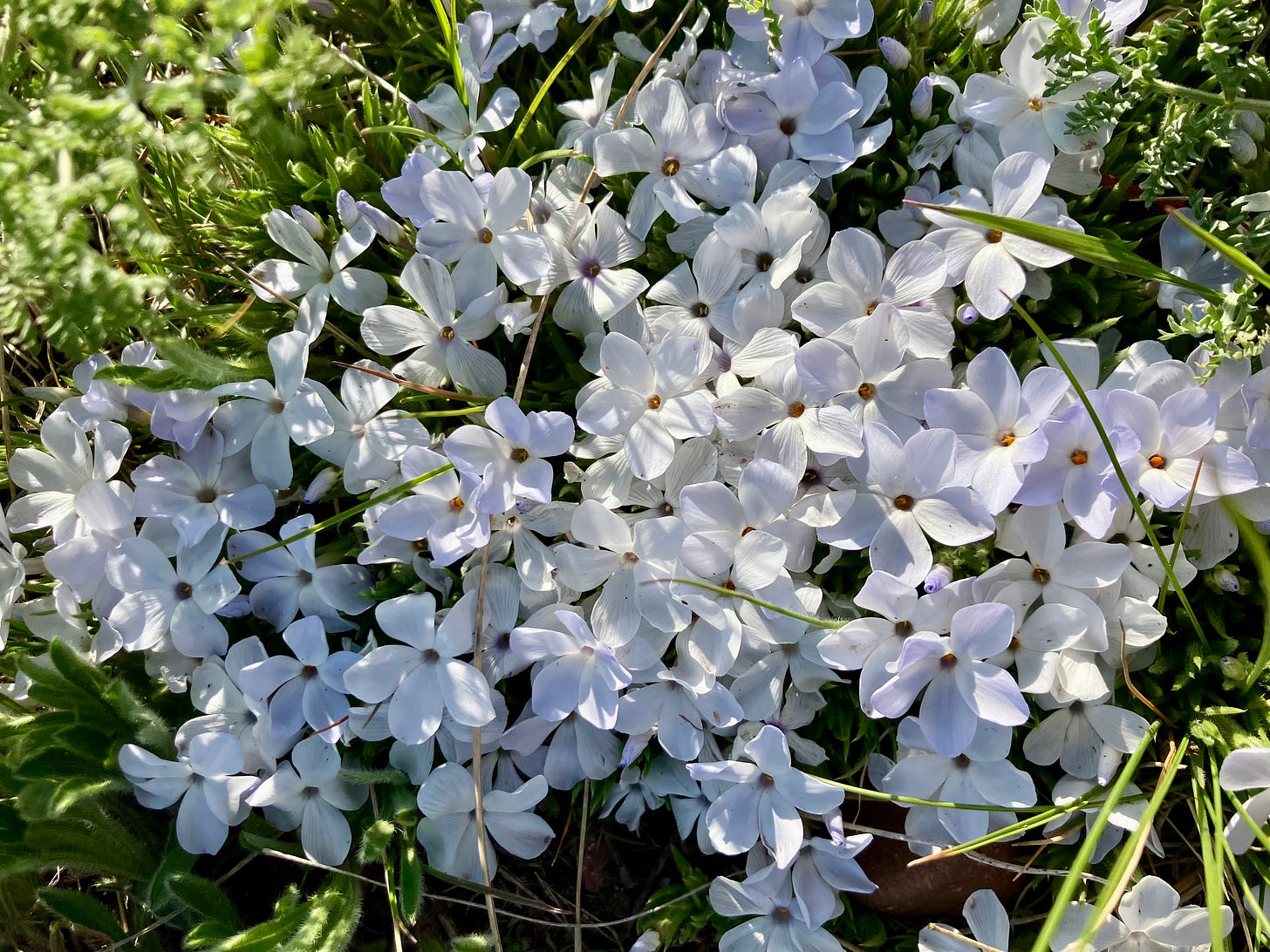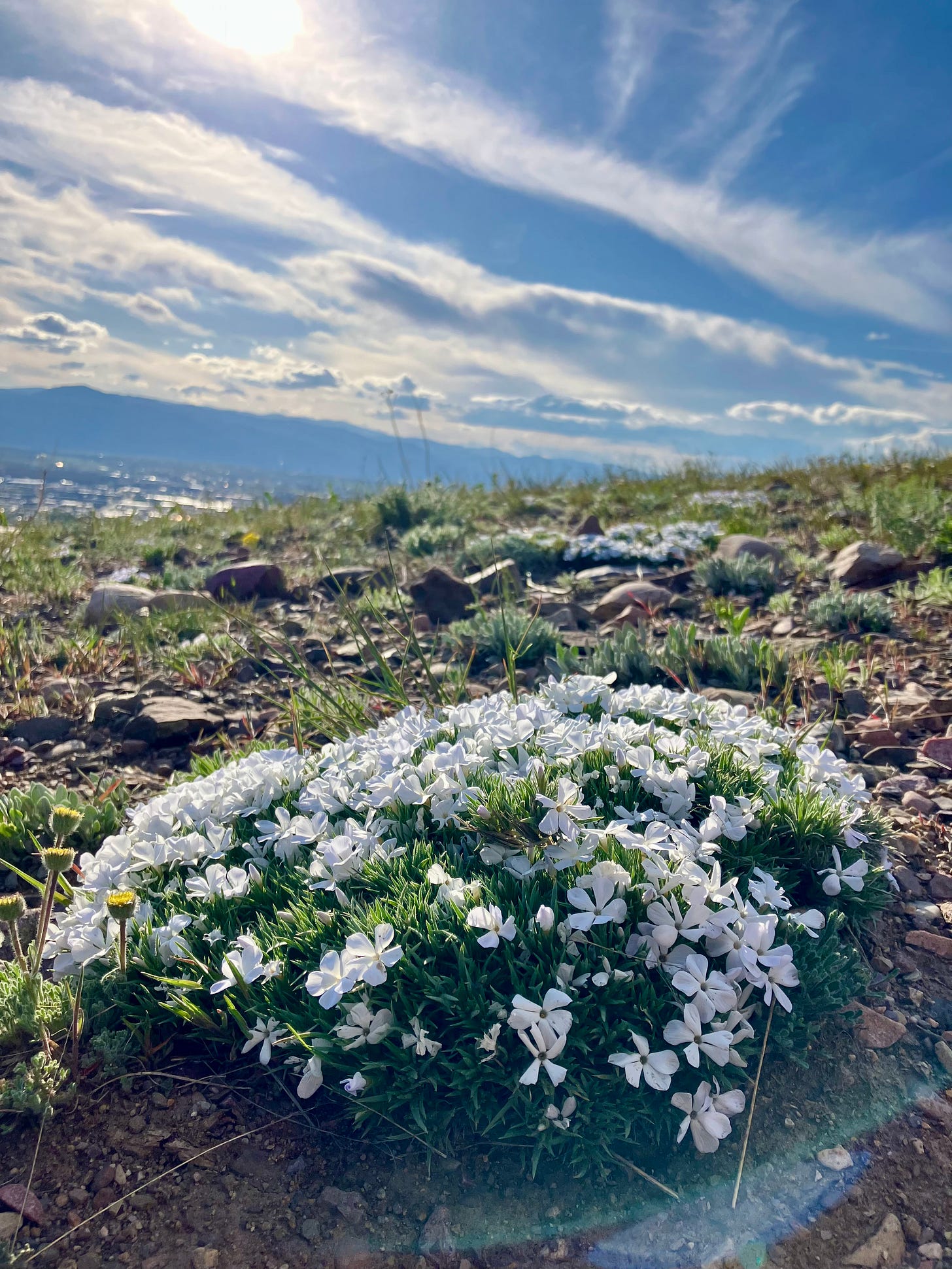After a night of rain and a day of sun, Western Meadowlarks and Missoula Phlox are in their glory.
This dainty little species is a very specific sub-variant that bears the name of our fine town and is particularly suited to Waterworks Hill on the northern rim of the Missoula Valley. Because species-level distinction requires intimate botany knowledge and microscopic feature identification, I probably wouldn’t be able to distinguish it from many of its siblings if I didn’t already know that it loves our north hills in April.

In this case, the distinction comes down to the length of its stems (about four inches), the color variations of its flowers (creamy white to light blue), and the features of its succulent leaves (entire margins, maybe smooth, maybe hairy). Missoula Phlox is found in distribution beyond our valley, with reports of the flower proliferating as far away as Rock Creek, but that doesn’t mean we can’t call it our own.
***
In 2015, I started posting daily(ish) photos of Montana wildflowers on Instagram during the blooming season. The series began at a time when my kids were very young and my world’s perimeter had shrunk to match their size. Over the years, it became ballast, my writing practice during difficult days, and a means of more deeply relating with this place where I was born and raised.
My devotion to the practice has waned, due in part to how much Instagram has become enshittified. I’m done creating AI fodder for Zuck’s techbro garbagebaby, so I thought I’d try out the series here, just to see how it goes. To offer the blooming beings who inhabit this corner of Montana as a little touchstone of quiet creativity. To stand as counterpoint to the chaos and gleeful destruction that’s become quotidian. To be an argument against the mind-dessicating force that is artificial intelligence. And to be a small practice in citizen science — recording what blooms where and when, documenting variation and norms.
I am not Salish or Kootenai or Nimiipu or Blackfeet, not Indigenous to this land, so I’m offering what I know from my own experience, from my favorite field guides, and from resources I’ve stumbled across in my curiosity. I highly encourage watching Rose Bear Don’t Walk’s presentation on Salish ethnobotany and following the Salish Native Plant Society. Over the years, I’ve picked up a few plant names in Salish and I offer them as a reminder that native plants are integral to the place and the Indigenous people who live here and have always been here. The Montana Native Plant Society and the Montana Natural History Center are also great resources, though they are not Native-led organizations. LANDBACK.
It’ll still be a few more weeks before the blooming and the posts become regular, but I’ll keep the documentation happening as wildflowers emerge.
Thanks for reading. Hope you like it.




